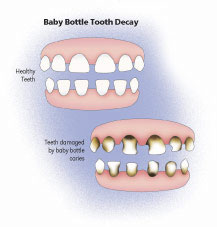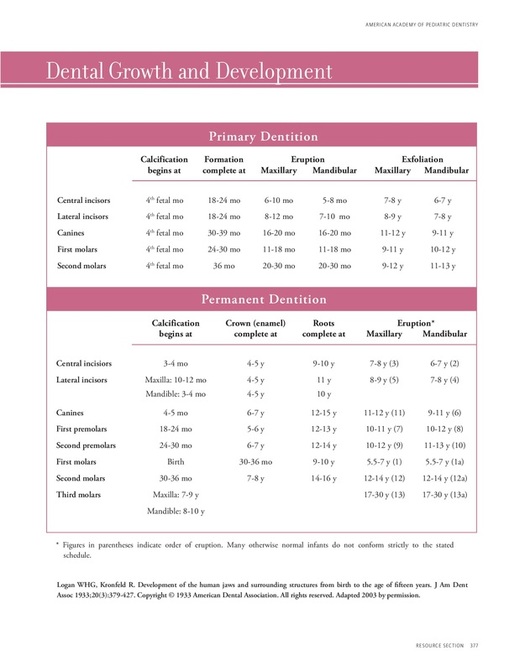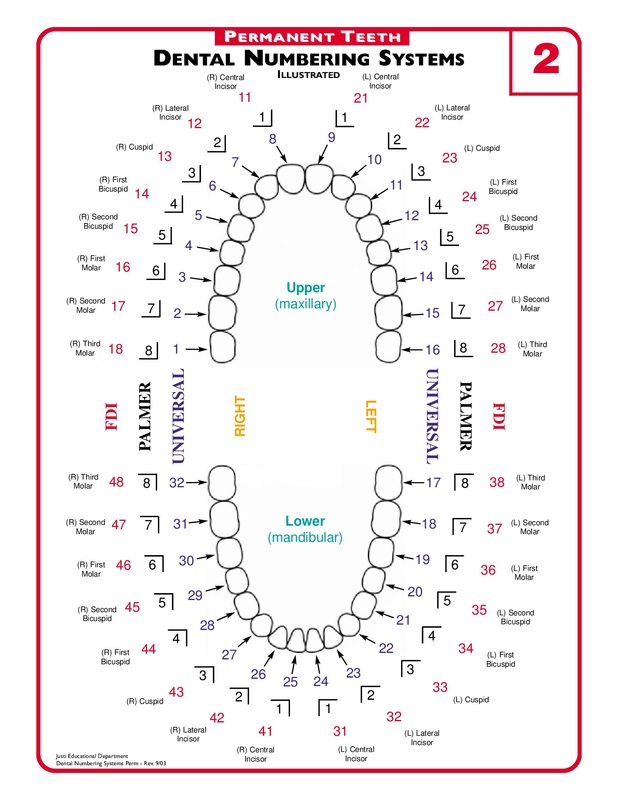 You may have seen a dental chart before, but to learn how dentists use it to monitor your child’s dental health is a good way to promote good oral care as your child grows. THE DENTAL CHART When your child visits a dentist for the first time, the dentist will begin charting their teeth. A periodontal chart, or simply dental chart, serves as an instrument for the pediatric dentist to note information and organize the data about the health of your kid’s gums and teeth as they grow. It is an effective tool to check problem areas and note on these chart. Pediatric dentists also use charts to track growth and loss of baby teeth and eruption of permanent teeth. The chart shows the period children start to lose their primary teeth between six and seven years old. Children start to complete their permanent teeth by 12 years old, when the third molars erupt in their late teens. By comparing the charts from previous visits, the dentist knows whether your child’s teeth are developing normally, at the right developmental start and in the right location. Since teeth differ in shape, size and their location in the jaws, these differences influence your child’s ability to speak, smile and chew, as well as how your child’s teeth gives his appearances its unique shape and form. How It Works Dentists use the Universal Numbering System when recording your child’s teeth. In the US, the Universal Numbering System is the official system used by the American Dental Association (ADA). In this system, the first tooth is situated at the upper far right of the kid’s mouth, also called as the ‘third molar’. The counting continues from the front to the upper left side, to the 16th tooth.  Oral health care should start during the first year of a child. Even before the first tooth emerges, oral hygiene are absolutely necessary to prevent baby bottle tooth decay, also called as bottle rot. What is Baby Bottle Tooth Decay? Even if they’re temporary, your baby’s milk teeth are vital, and are still prone to dental cavities. Tooth decay in toddlers and infants is referred to as Early Childhood Caries or Baby Bottle Tooth Decay. It is important for children to have strong, healthy teeth to chew food, have a pleasant-looking smile and speak. The first teeth also help ensure that their adult teeth emerge correctly. Starting infants off with proper oral care is important to help protect their teeth for many years to come.  Preventing Bottle Rot It is never too early to begin your baby on healthy routine. Follow these tips to help you prevent baby bottle tooth decay. Eliminate the Sugar Infants can experience tooth decay, but it is often caused by exposure to the sugars present in juices and milk, making it easier for bacteria to grow and thrive. The longer the sugar stays on the mouth, the higher the risk for tooth decay. The best ways to counter it is to avoid allowing the infant to nap or sleep with the bottle in his/her mouth and do not allow the child to walk around with it in the mouth. Offer healthier options by giving breast milk and formula and eliminating sugar drinks and artificial juices. Never share utensils or lick pacifiers as they can pass bacteria to your baby and may cause decay. Sterilize the Bottle Another important step to prevent bottle rot is to clean the bottle. Ensure the bottles you buy are free from BPA (Bisphenol A), a plastic chemical linked to developmental problems in kids. Sterilize these bottles properly before offering them to your child. There are different ways to sterilize baby bottles. You can boil the bottles in water, use as electric bottle steamer to destroy the bacteria or microwave them through a steam sterilizer. Sterilize the baby bottles once a week to prevent build-up of bacteria. Brush the Gums Your baby’s teeth may not surface yet but the gums still demand special care. Early childhood tooth decay often appears in the lower and upper front teeth. Such teeth are essential for speaking and eating, so the earlier your child begins a dental health care routine, the lower the chances of baby bottle causing problems later on. To clean the gums, use a clean gauze pad or wash cloth to wipe your baby’s gums after every feeding. Once the incisors emerges, you can start using an infant toothbrush and dab a fluoride toothpaste the size of a rice grain, as per American Dental Association. There are lots of kid-friendly toothpaste in the market, with fun faces on the package. Of course, don’t forget to schedule your first pediatric dental visit to establish a routine. Your baby’s budding teeth are very important.  Ask any kid what their favourite month of the year and the answer is almost always summer months. For them, summer means being out of school, evening barbecue, swimming and playing with friends and camping weekend. And while summer can be a great time for your kids, it can also pose challenges to parents, especially when it comes to keeping their dental health. The tempting sweets, physical activity and the too-lenient rules can leave your child with dental problems you don’t want to happen. At Mint Kids Dentistry by Dr. Soo Jun, we want every child to experience a fun summer. Below are some tips for parents on how to protect those precious smiles. Buy a new toothbrush Summer is the best time to get a new toothbrush. By the time summer approaches, your kid’s brushes are already due for replacement. The American Dental Association suggests replacing your toothbrush every three to four months. Let your child pick the color and style of their new brushes so they are more inclined to clean twice a day. Bring them to the grocery. Kid’s toothbrushes comes in different themes, colors and styles. You can also buy a toy that matches the theme of your child’s brush to encourage your child to clean every day. Limit summer treats Candy soda, ice pops, cotton candy. Summer is not just about playing, it is also about food and treats. Unfortunately, these sugary snacks can cause a high number of dental cavities. It’s fine to have your kids have a few snacks, but you should limit these treats before bedtime. Look for sugar-free or low sugar snacks. Make your own ice pops made from pureed fruits rather than buying from the store. Always keep berries in the kitchen, as they are often as sweet as candy. Make a routine While your summer activities might be a bit lax than your typical school days, it is important that your kids follow some form of structure. Instead of making a strict schedule, write down a list of things that should be done before your child start his/her day outside. Combine tooth brushing with other simple tasks such as making their beds or cleaning their room. Before bedtime, institute a similar policy as part of a wind-down routine. In this way, brushing becomes a habit together with other tasks. Schedule a dental checkup Even if your child seem motivated in keeping up with dental hygiene while at home, you have to limit summer dental surprises by following a schedule for dental checkups. It is important to schedule a checkup before school commence – it is an easy time of the year to remember and it can serve as a reminder for kids to keep following a good personal dental hygiene. It can be difficult to get your child to continue brushing and flossing even when the school is out. By making dental hygiene a habit, you won’t have to fear about any dental concerns this summer.  Thumb-sucking is a very common childhood activity that make babies feel happy and secure. It is a natural reflex for kids – sucking fingers, thumbs, pacifiers and other objects. Young kids may also do this to relax themselves and help them fall asleep. Is thumb-sucking normal at his age? When should I be concerned about this thumb-sucking habit? Most experts agree that a child younger than 5 and still thumb-sucking should not be pressured to stop. But the problem is, thumb-sucking can lead to dental problems. With the permanent teeth coming in, a child thumb-sucking beyond the age of 5 may develop an abnormal bite, but beyond this problem, some kids develop speech problems such as trouble with the ‘S’ sound and other tongue-tip sounds. Prolonged thumb-sucking habit can cause minor problems such as calluses, chapped skin on the fingers and even fingernail infections. Fingernails may become shriveled up and the nails may not grow properly. During the winter, the skin on finger may become cracked and dry, which could make him even want to suck more. So, what can I do to stop this habit? If your child is sucking his thumb, don’t fret. There are ways you can do to help him stop that habit.
When your child successfully break the habit, make sure you praise and reward him. Take note that breaking any habit is difficult to do and such achievement is one that he should be proud of. |
AuthorMint Kids Dentistry Archives
July 2021
Categories |
Location |
|
Sitemap
|
Forms
|



 RSS Feed
RSS Feed